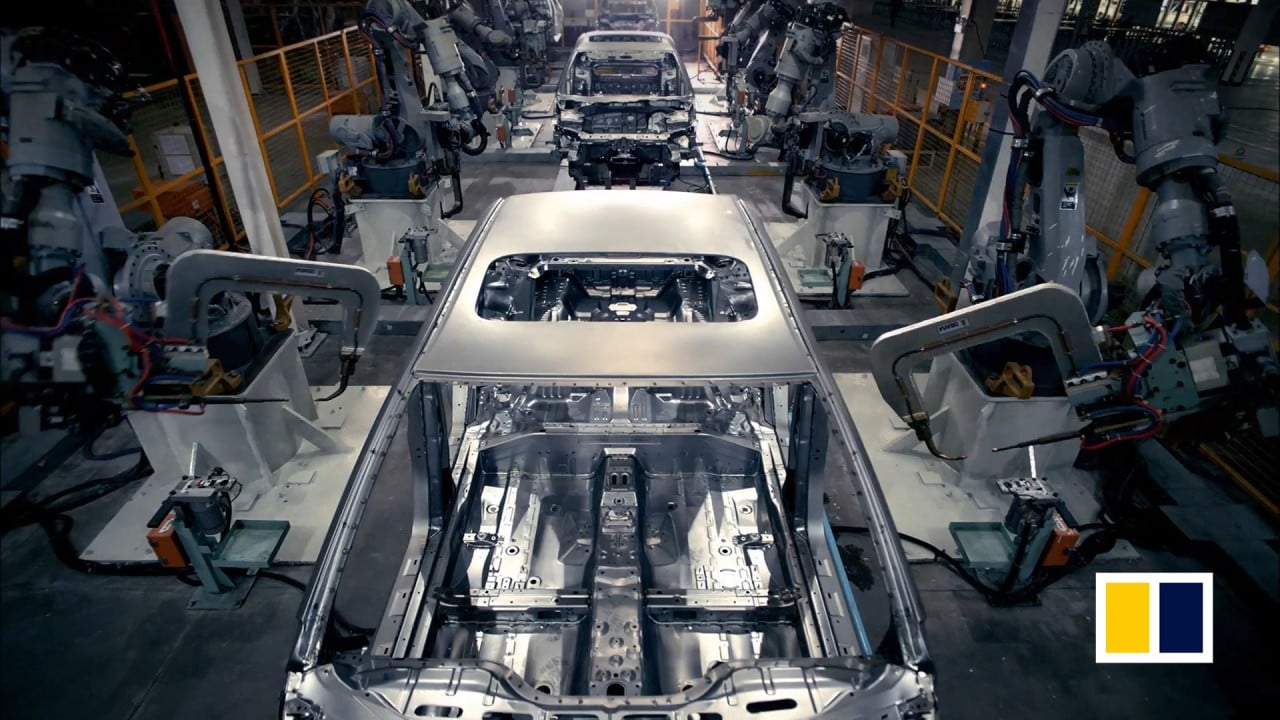
Why Elon Musk can’t scoff at China’s BYD any more
- Behind BYD’s transformation from a factory making rechargeable batteries to a formidable electric vehicle maker lies China’s industrial policy and the company’s strategic acumen
- The carmaker, which also produces battery and electric vehicle chips, is setting its sights beyond the Chinese market – world domination is within grasp
How did BYD, founded in 1995 as a factory making rechargeable batteries, become a world-leading EV maker? Its recipe for success is a combination of Chinese industrial policy and the company’s own strategic acumen.
The market for fossil fuel vehicles has long been dominated by European and US companies, and competing against them would have been an uphill battle. Instead, China saw a window of opportunity in EVs, so deployed an industrial policy from the late 2000s to create and encourage an EV market.
This gave BYD, which later made e-buses that were to sold to Shenzhen and elsewhere, time to improve the functionality and quality of its EVs in a controlled environment. As more electric buses and taxis appeared, public awareness grew. More Chinese cities, such as Suzhou, followed suit.
BYD also uses a vertical integration strategy – meaning it relies more on in-house processes than external suppliers – which helps it quickly develop affordable and attractive EV models for different market segments.
The company started out by learning from reverse engineering foreign cars. Its first self-developed car, the F3, looked like a Toyota Corolla and was launched in 2005 at a much lower price. But BYD had aspirations of becoming a world-leading EV maker so it began to build its in-house capabilities.
Today, BYD cars use “blade batteries”, its proprietary lithium iron phosphate batteries that are said to be safer, cheaper and more durable than conventional lithium-ion ones. BYD is also capable of producing its EV chips. By integrating these in-house research and development capabilities, BYD has more control over the cost, quality, speed of development and supply of key components.
This also enables BYD to target different market segments with different models. Those in China include the new Dolphin, a compact hatchback EV, with a base price of US$16,700, and the Han, a luxury sedan with a base price of US$40,000 seen as competition for Tesla’s Model 3 and Model S.

While BYD has a factory in Lancaster, California, that produces electric buses, it has not yet entered the US passenger EV market. China-made cars face compliance challenges and a 27.5 per cent tariff – the same hurdles that turned Tesla’s off exporting its China-made EVs to the US.
But even if US protectionism is depriving American consumers of access to affordable Chinese EVs, BYD continues to expand globally. No wonder Musk has finally admitted that BYD cars are “highly competitive these days”.
Christopher Tang is a distinguished professor at the UCLA Anderson School of Management


